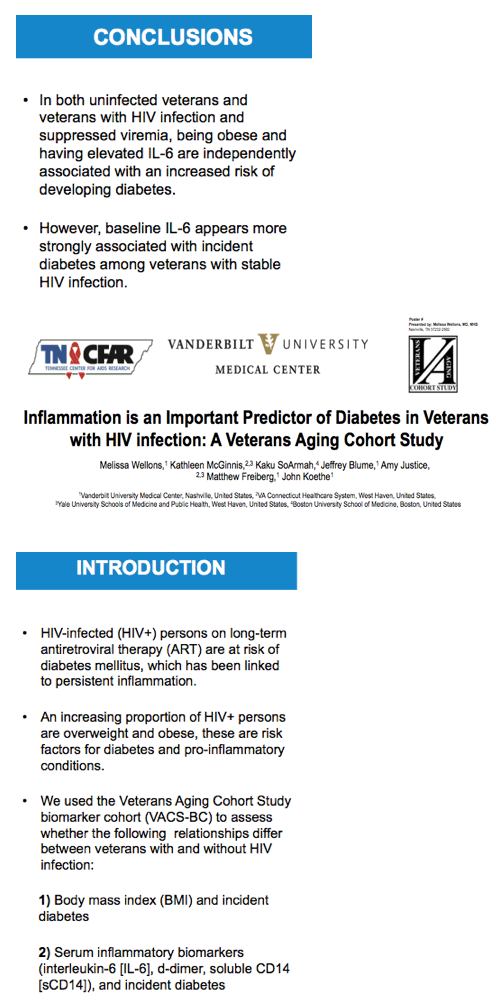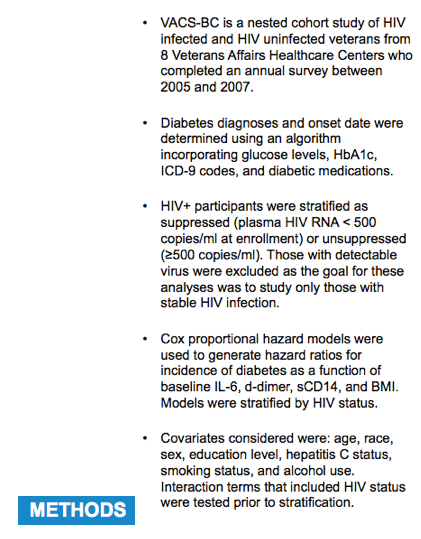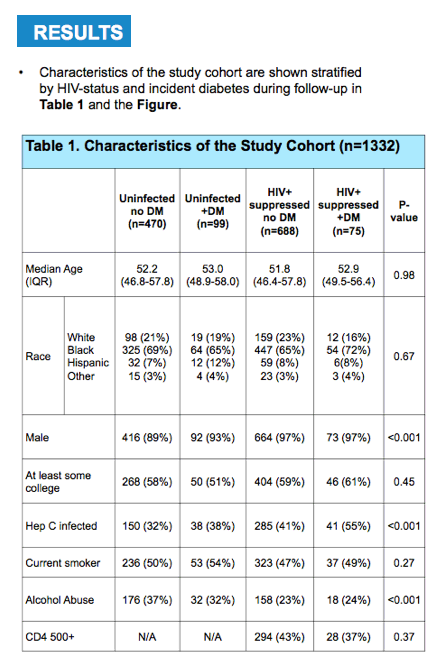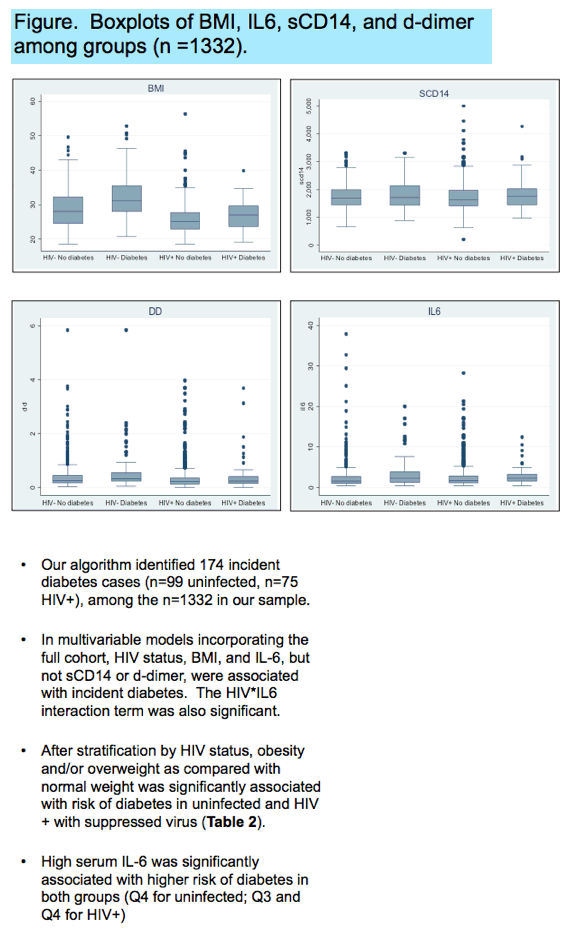 |
 |
 |
| |
Inflammation and Obesity Tied to Incident Diabetes in Veterans With HIV
|
| |
| |
9th IAS Conference on HIV Science (IAS 2017), July 23-26, 2017, Paris
Mark Mascolini
Inflammation indicated by interleukin 6 (IL-6) levels independently predicted new diabetes in US veterans with controlled HIV infection and in HIV-negative veterans [1]. Obesity, a classic diabetes risk factor, also predicted diabetes in the HIV-positive and negative groups.
A Veterans Aging Cohort Study (VACS) team used the VACS biomarker cohort to explore relationships between (1) overweight/obesity and incident (newly diagnosed) diabetes and (2) markers of inflammation (IL-6, d-dimer, sCD14) and incident diabetes. The VACS biomarker cohort includes both HIV-positive and negative veterans at 8 Veterans Affairs centers who completed an annual survey between 2005 and 2007. To determine new diabetes diagnoses and onset date, the researchers used an algorithm incorporating glucose, HbA1c, ICD-9 codes, and diabetes medications.
The researchers classified HIV-positive participants as suppressed (viral load below 500 copies) or unsuppressed (at or above 500 copies). They excluded veterans with detectable HIV from the analysis. To assess potential associations between incident diabetes and baseline inflammation markers and body mass index, the investigators used Cox proportional hazard models adjusted for age, race, sex, education, hepatitis C status, smoking, and alcohol use.
The 1332-person study group included 688 HIV-suppressed veterans without diabetes, 75 HIV-suppressed veterans with incident diabetes, 470 HIV-negative veterans without diabetes, and 99 HIV-negative veterans with incident diabetes. Median age was similar across the four groups at around 52 years. About two thirds of the study group were black, and about 95% were men. Among veterans with diabetes, those with HIV had a higher proportion with HCV (55% versus 38%, P < 0.001) and a lower proportion with alcohol abuse (24% versus 32%, P < 0.001).
In the multivariate Cox model baseline obesity predicted incident diabetes in HIV-suppressed veterans (adjusted hazard ratio [aHR] 2.50, 95% confidence interval [CI] 1.32 to 4.76) and in HIV-negative veterans (aHR 4.10, 95% CI 2.00 to 8.38). Overweight predicted incident diabetes in HIV-negative veterans but not in the HIV group. Neither race nor sex predicted incident diabetes in this analysis. Among inflammatory markers, higher baseline IL-6 predicted incident diabetes in HIV-suppressed veterans (for quartile 4 versus 1, aHR 2.30, 95% CI 1.05 to 5.03; for quartile 3 versus 1, aHR 2.47, 95% CI 1.14 to 5.34) and in HIV-negative veterans (for quartile 4 versus 1, aHR 2.17, 95% CI 1.25 to 3.75).
The VACS investigators concluded that being obese and having elevated IL-6 (an inflammation marker) were independently associated with incident diabetes in veterans with suppressed HIV and in HIV-negative veterans.
Reference
1. Wellons M, McGinnis K, So-Armah K, et al. Inflammation is an important predictor of diabetes in veterans with HIV infection: a Veterans Aging Cohort Study. 9th IAS Conference on HIV Science (IAS 2017), July 23-26, 2017, Paris. Abstract TUPEC0820.




|
| |
|
 |
 |
|
|